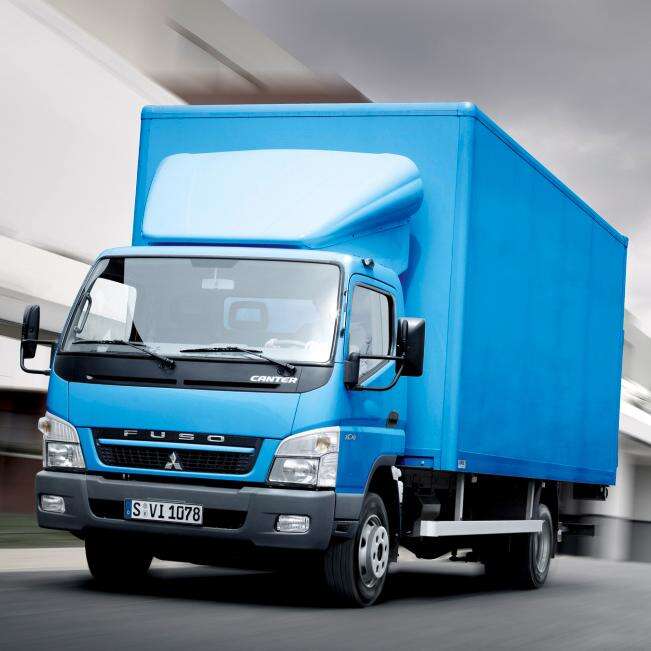Utvecklingen av belysningsteknik för lastbilar
Lastbilsbranschen har genomgått en anmärkningsvärd förändring av fordonsbelysningssystem under det senaste decenniet. Led-lampor för lastbilar har blivit standard, vilket omvandlat sättet som flåtthanterare och fristående förare belyser sina fordon. Dessa avancerade belysningslösningar kombinerar nyaste teknik med praktisk design och levererar oöverträffad hållbarhet och energieffektivitet som traditionella halogen- eller glödlampslösningar helt enkelt inte kan matcha.
Modern LED-belysning för lastbilar representerar toppen av innovation inom fordonsbelysning, med överlägsen ljusstyrka, minimal elförbrukning och exceptionell livslängd. När transportbehoven fortsätter att växa har dessa robusta belysningslösningar blivit oumbärliga för att upprätthålla säkerhet och effektivitet på våra motorvägar.
Kern-teknik bakom LED-lastbilsbelysning
Halvledarbaserad ljusgenerering
I kärnan av LED-lampor för lastbilar ligger en sofistikerad halvledarteknologi. Till skillnad från traditionella glödlampor som förlitar sig på upphettade glödtrådar eller gasurladdning, skapar LED:er ljus genom elektroluminescens. När elektrisk ström passerar genom halvledarmaterialet frigör elektroner energi i form av fotoner, vilket ger klart och konsekvent belysning. Denna grundläggande skillnad i ljusskapandet är vad som gör att LED-teknologin från sin natur är mer effektiv och tillförlitlig.
De halvledarchip som används i moderna LED-lampor för lastbilar är noggrant konstruerade för att sända ut specifika våglängder av ljus, vilket säkerställer optimal synlighet samtidigt som energiförluster minimeras. Avancerade tillverkningsprocesser skapar mycket slitstarka komponenter som kan tåla de krav som långa transportturer ställer.
Termisk hanteringssystem
Överlägsen värmeavledning är avgörande för LED-lastbelysningens livslängd. Moderna LED-lampor har sofistikerade termiska system, inklusive aluminiumkylkroppar och avancerade kylfjäll. Dessa komponenter leder värmen effektivt bort från lysdioderna, vilket förhindrar prestandaförsämring och förlänger driftslivslängden.
De senaste LED-lamporna för lastbilar är utrustade med intelligenta temperaturövervakningskretsar som anpassar strömtillförseln baserat på termiska förhållanden, vilket säkerställer konsekvent prestanda under varierande miljöförhållanden. Denna avancerade termoreglering hjälper till att bibehålla optimal ljusutgång samtidigt som den skyddar de interna komponenterna mot värmerelaterad belastning.

Konstruktion och hållbarhetsfunktioner
Slagbeständig kapsling
Den yttre konstruktionen av LED-lampor för lastbilar spelar en avgörande roll för deras livslängd. Tillverkare använder linsar i högkvalitativt polycarbonat och robusta aluminiumhöljen som skyddar de inre komponenterna mot fysisk skada. Dessa material väljs specifikt för deras förmåga att tåla extrema temperaturer, motstå UV-förstöring och bibehålla strukturell integritet under hårda förhållanden.
Avancerade tätningslösningar förhindrar inträngning av fukt och smuts, vilket bevarar elektriska komponents integritet. Många moderna LED-lampor för lastbilar har IP67- eller IP68-klassificering, vilket indikerar fullständig skydd mot damm och vattenimmersion.
Vibrationsbeständig Design
Lastbilar opererar under svåra förhållanden som genererar betydande vibrationer. LED-lampor för lastbilar är utrustade med specialiserade monteringssystem och inbyggda chockabsorberande funktioner för att neutralisera dessa mekaniska påfrestningar. Förstärkta kretskort och säker komponentmontering säkerställer att elektriska anslutningar förblir stabila trots kontinuerlig rörelse.
Den solid-state-natur som LED-tekniken innehar bidrar till naturlig vibrationsmotstånd, eftersom det inte finns några glödtrådar eller ömtåliga delar som kan gå sönder. Denna grundläggande fördel gör att LED-lampor särskilt väl lämpar sig för de krävande förhållandena inom kommersiell lastbilstrafik.
Energitekniska mekanismer
Strömhanteringssystem
Moderna LED-lampor för lastbilar innehåller sofistikerade strömförvaltningssystem som optimerar energiförbrukningen. Dessa system reglerar spänning och strömflöde, vilket säkerställer att LED:arna fungerar med högsta effektivitet samtidigt som kraftiga strömsuddar undviks, vilket kan kompromettera livslängden. Avancerade drivarkretsar bibehåller en stabil ljutsökning även när fordonets elfsystem upplever svankningar.
Strömförvaltningssystemen möjliggör också funktioner som mjuk start och intelligent mörkläggning, vilket ytterligare förbättrar energieffektiviteten samtidigt som komponenternas livslängd förlängs. Vissa avancerade modeller inkluderar anpassningsbar ljusstyrka som automatiskt justerar ljusutgången beroende på omgivande förhållanden.
Ljusfördelnings teknik
Effektiv ljusfördelning uppnås genom noggrant utformade optiska system. LED-lampor för lastbilar använder avancerade reflektordesigner och specialiserade linser för att rikta ljuset exakt dit det behövs, vilket minimerar slöseri och maximerar synligheten. Denna målinriktade belysningsmetod säkerställer att en större del av det genererade ljuset har en praktisk funktion, vilket förbättrar den totala systemeffektiviteten.
Modern optik inkluderar också funktioner för att minska bländning och ljusföroreningar, vilket uppfyller stränga regleringskrav samtidigt som optimal synlighet bibehålls för förare. Resultatet är ett belysningssystem som ger överlägsen illumination samtidigt som det förbrukar betydligt mindre energi än traditionella alternativ.
Underhålls- och hållbarhetsfaktorer
Förlängda serviceintervall
En av de mest betydande fördelarna med LED-lampor för lastbilar är deras minimala underhållskrav. Med en typisk livslängd på över 50 000 timmar kan dessa belysningssystem fungera kontinuerligt i år utan att behöva bytas ut. Denna förlängda livslängd minskar underhållskostnaderna och fordonsnedtiden avsevärt när det gäller reparationer av belysningssystem.
Den robusta konstruktionen och tillförlitliga elektroniken eliminerar många vanliga felkällor som finns i traditionella belysningssystem. Flottchefers kan fokusera på andra underhållsuppgifter, med vetskapen om att deras LED-belysningssystem kommer fortsätta fungera tillförlitligt.
Motståndskraft mot miljöpåverkan
LED-lampor för lastbilar är konstruerade för att tåla olika miljöpåfrestningar. Från extrema temperaturvariationer till kemikalier och vägsalt bibehåller dessa belysningssystem sin prestanda och effektivitet oavsett omständigheter. Särskilda beläggningar och material skyddar mot korrosion och oxidation, vilket säkerställer långsiktig tillförlitlighet i alla väderförhållanden.
Den tätslagna konstruktionen förhindrar inre förorening, medan UV-resistenta material förhindrar gulnande eller nedbrytning av optiska komponenter. Denna omfattande miljöskydd bidrar avsevärt till den förlängda driftslivslängden för LED-lastbilsbelysningssystem.
Vanliga frågor
Hur länge håller LED-lampor vanligtvis på lastbilar?
Högkvalitativa LED-lampor för lastbilar håller vanligtvis mellan 50 000 och 100 000 driftstimmar. Detta motsvarar ungefär 5–10 år av kontinuerlig användning, beroende på driftsförhållanden och underhållsrutiner. Många tillverkare erbjuder garantiperioder på 5 år eller längre, vilket visar deras förtroende för teknikens livslängd.
Vad gör att LED-lastbilsbelysning är mer energieffektiv än traditionella alternativ?
LED-lampor uppnår överlägsen energieffektivitet genom sin halvledarbaserade ljuskälla, vilket omvandlar mer elektrisk energi till ljus istället för värme. Jämfört med halogenlampor förbrukar LED-lampor för lastbilar typiskt 80–90 % mindre ström samtidigt som de ger motsvarande eller bättre belysning. Denna effektivitet kommer både från LED-teknologin i sig och avancerade strömförsörjningssystem.
Är LED-lampor värt den högre initiala investeringen för lastbilsflottor?
Även om LED-lampor för lastbilar kan ha en högre anskaffningskostnad ger de vanligtvis en betydande avkastning på investeringen genom minskat energiförbrukning, begränsade underhållskrav och förlängd livslängd. Flottchefers återbetalning av den initiala investeringen sker vanligtvis inom 1–2 år genom driftsbesparingar och ökad fordonstillgänglighet.


